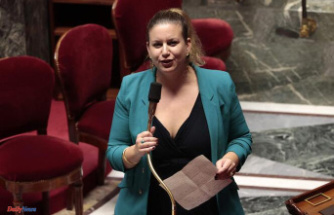In view of the high energy costs, the state wants to subsidize the price of electricity. A paper now shows how the aid will be designed and also how the profits of the electricity producers could be skimmed off. However, there are still open questions.
The federal government also wants to help consumers and companies with electricity prices. However, the aid is limited - similar to the gas price brake. According to a first draft for the so-called electricity price brake from the Ministry of Economic Affairs, the annual consumption of the past should be used as a basis. "As far as possible and reasonable, orientation towards the proposals of the gas price commission," it says there. However, the reimbursement of a monthly advance payment, as proposed by an expert commission to curb gas prices, is not expressly mentioned.
The relief is to be financed by skimming off so-called random profits from electricity producers, as the EU Commission has also decided. Both gas and electricity price brakes are to be decided in the cabinet on November 18th.
According to the paper, the government is considering collecting 90 percent of the revenues from the electricity companies, which are above the generation costs plus a profit mark-up, for financing. This should take effect from December. For transactions on the spot market, i.e. short-term trading, retrospective deductions can be made from March. How much income the government expects from this is not clear from the paper.
The background is that in the course of gas prices, electricity prices have also risen rapidly. This is due to a special feature of the electricity market, in which gas-fired power plants in particular determine the price. Household customers must reckon with at least a doubling. On the other hand, most producers' costs have not risen to the same extent. Renewable energies, nuclear and lignite power plants produce comparatively cheaply and thus currently guarantee extremely high revenues on the electricity exchanges - so-called random profits. The EU Commission had therefore already set a framework for a levy, but left a lot of leeway to the countries at Germany's insistence.
The Economics Ministry is now proposing to grade the levy depending on the type of production. First of all, the block of costs is guaranteed. For example, around ten cents per kilowatt hour are generally used in the concept for renewable energies. In addition, there is a surcharge for types of generation, referred to here as a security surcharge, of another three cents. For nuclear energy, it's four cents plus a three cent surcharge. According to the concept, 90 percent of everything that is redeemed from the producers on the market is skimmed off.
A multiple can currently be achieved on the spot market for the sale of electricity for the next day. According to the paper, however, the government is considering not skimming off profits from electricity from hard coal, natural gas and biomethane. The production costs are significantly higher here. In addition, biomethane should also replace the scarce natural gas.
The ministry experts write that skimming off the profits on the futures market is much more complicated, i.e. if electricity is sold for delivery in two or three years. Most companies and municipal utilities cover their expected needs here in order to be less dependent on the strongly fluctuating prices on the spot market.
The Economics Ministry sees the problem that, depending on the skimming concept, producers would only offer their electricity on the spot market or, conversely, only on the futures market, which in turn would trigger considerable price distortions on the markets.












